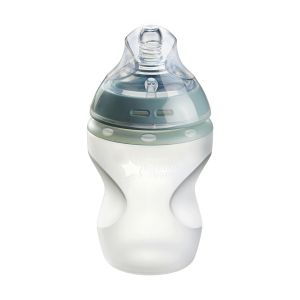
This is a demo store. No orders will be fulfilled.
Subscription orders can be cancelled at anytime. Standard delivery will be charged on each subscription order. Find out more about subscriptions.
They’re easy and fuss free
Your products are automatically sent to you
You save when you sign up for a subscription
You can cancel at any time
A hungry, crying baby wants their milk right away and won't understand waiting just a minute or two for you to warm up their bottle safely.
But why do we heat baby bottles? And what's the best way to warm them safely and quickly to minimise baby's tears?
If you're formula feeding, it's recommended that you make up a bottle fresh. To make up a new bottle you need to use hot water so that bacteria found in the formula powder can be killed.
But also, babies like their milk warm. When babies are breastfed, milk is naturally at body temperature, so babies usually prefer milk that's warmed to body or room temperature when they're feeding from a baby bottle.
Warmed milk is easier for baby to digest, as they don't need to use extra energy to warm it up in their tummy. So some parents find that warm milk is less likely to cause baby to have tummy aches. If you're reheating a pre-prepared bottle the idea is just to warm a baby bottle by gently raising the temperature, not to make the milk feel hot.
There are a wide range of different baby feeding bottles to choose from and what you choose is very much up to you and your baby. Some babies will prefer the feel of a particular teat and you may have to try a few before you find the one that's best for you.
If you're transitioning from breastfeeding to bottle feeding, a teat that feels and moves like a breast should make the switch easier. All Tommee Tippee teats are shaped, move and stretch just like mum's breast, because that's what babies like.
Baby bottles are made from glass, plastic or these days, silicone. If you're using plastic bottles, check that they're BPA free. And always check the manufacturer's instructions for cleaning, sterilising and warming any baby bottles.
Don't heat your baby milk in a microwave. Microwaves don't always heat things evenly, so even if your baby bottle feels okay on the outside, there can be hot spots in the milk that could scald your baby's mouth. Overheating breast milk destroys the precious nutrients it contains.
It's safer to use a baby bottle warmer or some warmed tap water to warm your baby's bottle.
This is probably the easiest way to heat up a bottle of breast milk or formula that's been stored in the fridge or freezer. Bottle warmers are usually fast and easy to use and take the guess work out of warming baby's bottles to that ideal body temperature.
Make sure that the bottle warmer you choose is suitable for the types of baby bottles you're using and always follow the instructions.
There's no need to boil water to warm baby's bottle. Remember, you're just trying to gently warm the milk inside to body temperature. Fill a jug or bowl with warm water. The water should be hot enough to heat the bottle, but cool enough so that you can place your hand in it.
Place baby's bottle in the warm water for no more than 15 minutes. Once the bottle is warmed, swirl it gently to make sure all the milk is warmed evenly, but avoid shaking as this can introduce air bubbles.
Have you ever wondered why people squirt milk from baby's bottle on their wrists to test the temperature? It's because the skin on the inside of your wrist is thin and sensitive, just like your baby's, so this serves as a reliable guide. It should feel neutral - not too warm and not hot.
Breast milk comes from mum at a natural body temperature of around 37��C/99��F. So if you've cooled breast milk to store it or if you're making up a bottle of formula, you should warm baby's bottle to about the same temperature.
Yes they can. There's no harm in giving your baby formula that you haven't warmed up, as long as it was made up with hot sterile water and stored in a fridge after cooling. But babies tend to prefer their milk warm as that's what they're used to and it's easier for tiny tummies to digest.
Among the many wonderful things about breast milk is that it contains tryptophan, a substance that encourages the brain to produce the sleep hormone melatonin, so it's most likely this that makes baby feel sleepy after feeding. Tryptophan can also be found in baby milk formula and in dairy products.
Warmed milk is easier for baby to digest too so less chance of discomfort at bedtime.
Yes and it's really not a good idea. Overheating breast milk destroys the natural nutrients it contains. Rapidly heating and then cooling baby bottles can also cause baby bottles to become misshapen or damaged, which can encourage bacteria to grow inside.
Bacteria can form in any milk especially when saliva gets into it during feeding, which is why you should not refrigerate and reheat any milk that you give to baby.
You should always use warmed formula to feed baby immediately and never reheat it. The ideal is to prepare formula as and when needed.